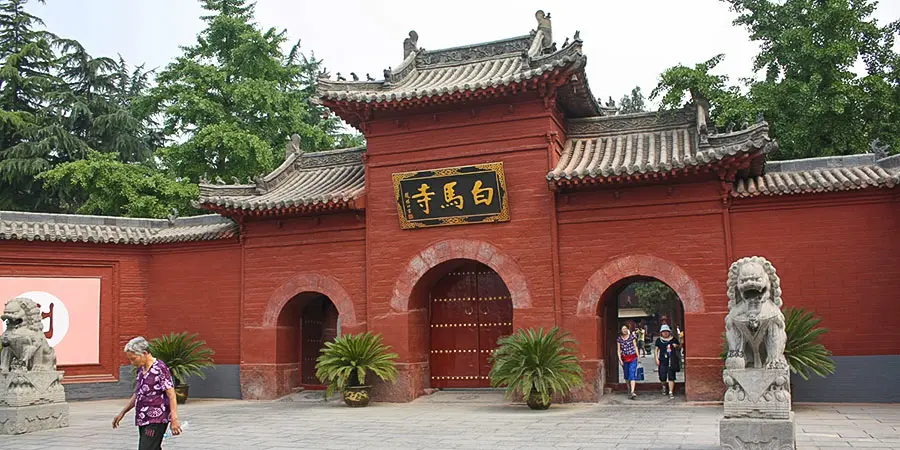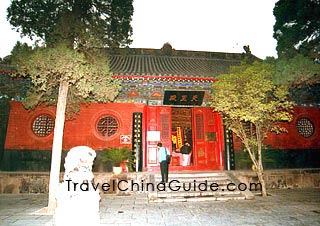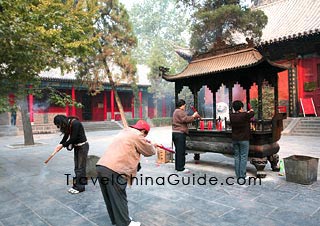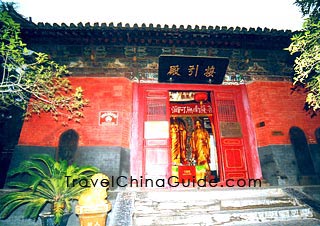White Horse Temple
White Horse Temple Facts
When was the White Horse Temple Built: in the Year 68AD in Eastern Han Dynasty (25-220)
White Horse Temple, boasting great antique architecture, has remained intact for over 1,900 years.
Who built the White Horse Temple in China? It was commanded by Han Emperor Ming. In the year 64 of the Eastern Han Dynasty, the emperor sent a delegation of his men to study Buddhism in the western world. After three years, two eminent Indian monks, She Moteng and Zhu Falan, came back with the delegation. They brought with them a white horse carrying Buddhist sutras and Buddhist figures on its back. This was the first time that Buddhism appeared in China.
 |
To express his thanks to the two monks and their white horse, the emperor ordered the building of a monastery which he named the White Horse Temple during the following year. During this time, the two monks were busy translating sutras in the temple until they completed the Chinese sutra 'Forty-two Chapter Sutra', which attracted many monks and meant that the temple became a centre for Buddhist activity in China. It is for this reason that the temple is honored as the 'Founder's Home' and the 'Cradle of Buddhism in China'.
The White Horse Temple is covered with green ancient trees and appears solemn and tranquil. Outside the gate, there is a pool with fences around and lovely fish in the water. It is for the believers to set free the captive animals. After crossing the pool via a stone bridge, you will enter the temple. To the east and west of the gate are the tombs of She Moteng and Zhu Falan, which are one of the six most famous sights here. In the east corner stands a tablet pavilion. The Chinese characters written on the tablet are the work of a Chinese calligrapher abbot Shamen Wencai, designed during the Yuan Dynasty (1271-368). They are written in his familiarly free and easy style and describe the history of the White Horse Temple.
The Hall of Heavenly Kings, Hall of the Great Buddha, Hall of Mahavira, Hall of Guidance and the Cool and Clear Terrace appear in proper order in the temple, as they were when it was first built.
|
|
Hall of Heavenly Kings
Hall of the Great Buddha
Hall of Guidance
Hall of Mahavira
 |
| Qiyun Pagoda |
The Cool and Clear Terrace
Outside the White Horse Temple, there is a tiered brick pagoda named Qiyun Pagoda, which is actually the oldest of China's ancient pagodas. It is the earliest example of ancient architecture in Luoyang and also one of the most precious Jin Dynasty (1115-1234) structures in the Central Plains of China. Standing south of the pagoda and clapping your hands, you will discover that the echoes you hear sound quite similar to the noise of frogs croaking. This perplexing phenomenon attracts many curious tourists every day.
How to get to White Horse Temple
| Entrance Fee | CNY 35 |
|---|---|
| Opening Hours | 7:30 - 19:00 |
| Recommended Time for a Visit | 1h |
- Last updated on Mar. 28, 2025 by Gabby Li -

